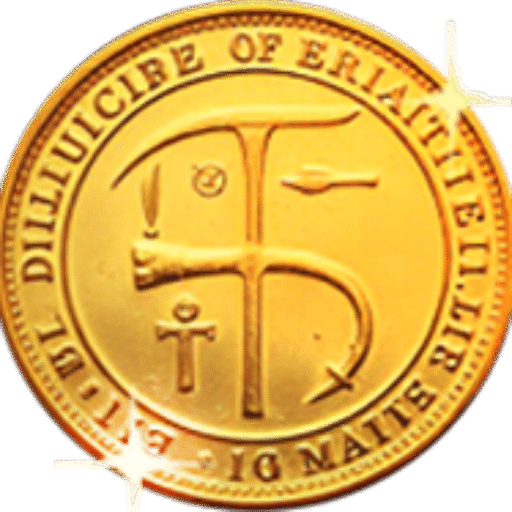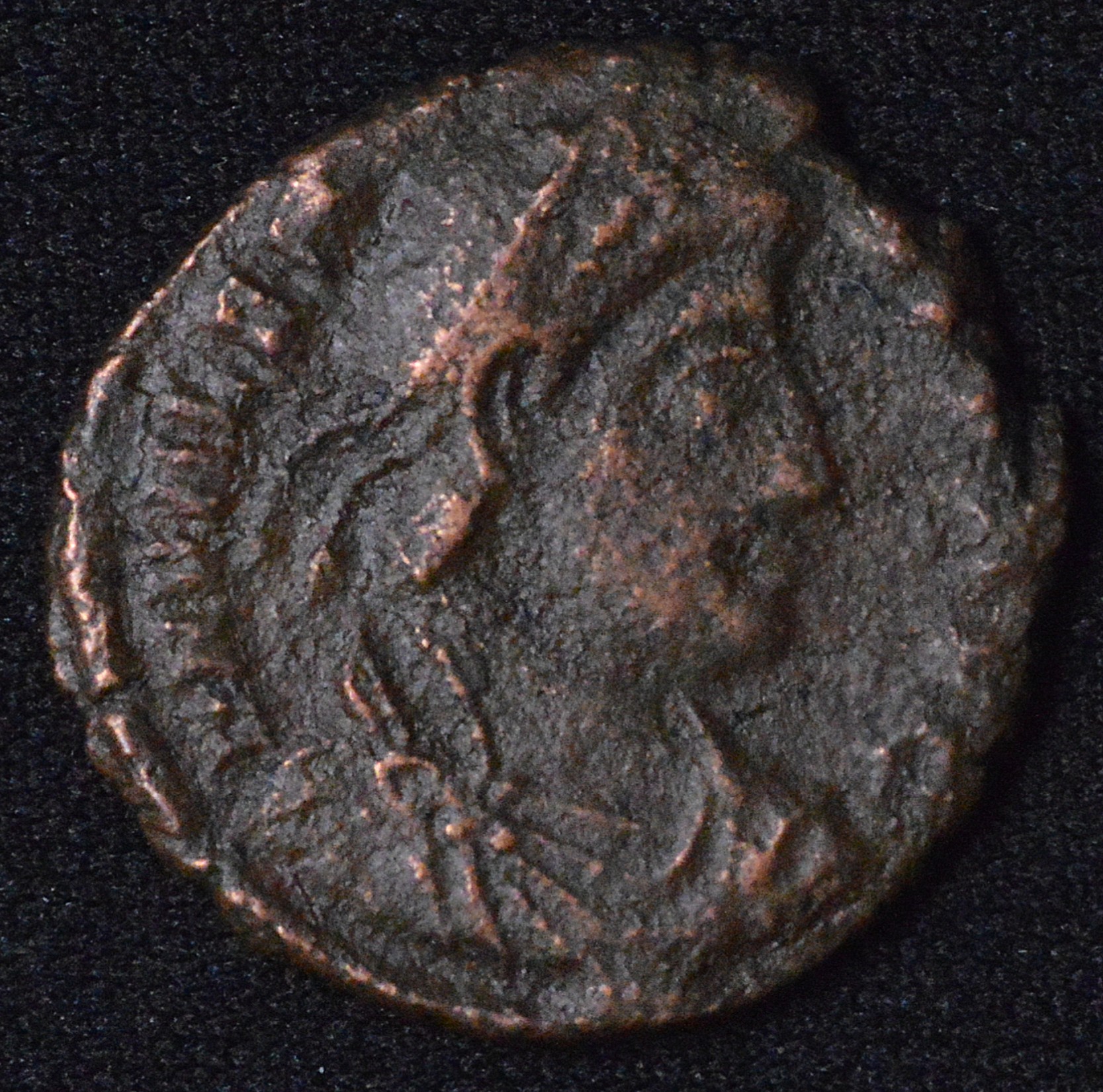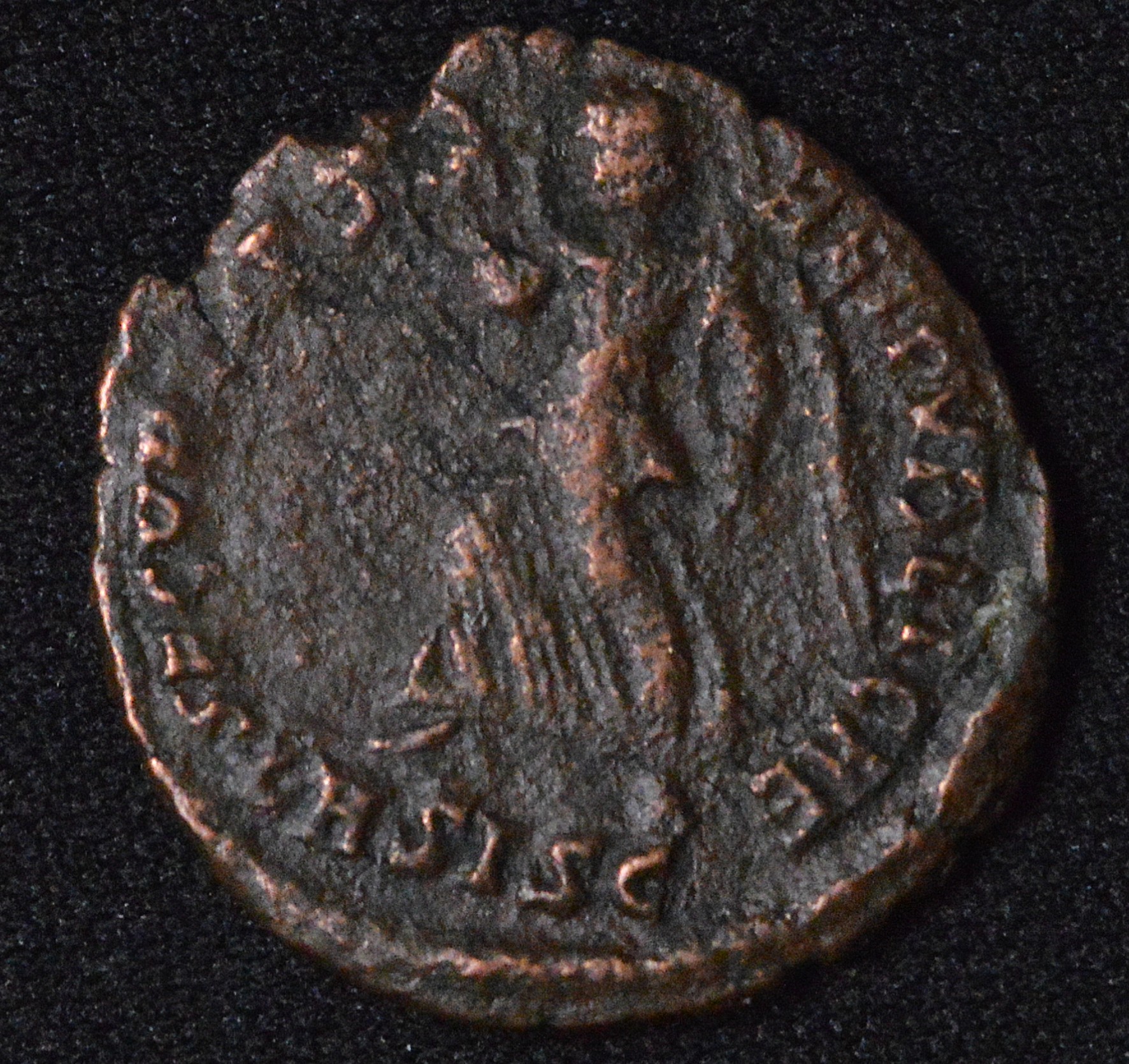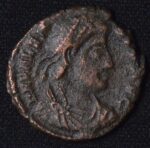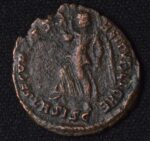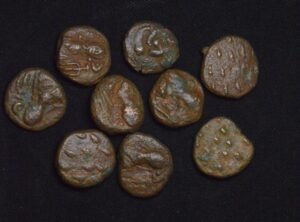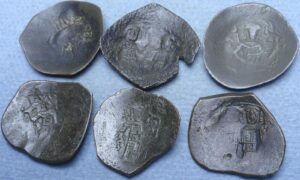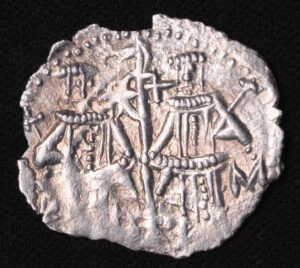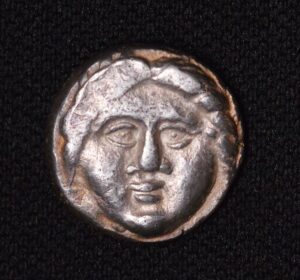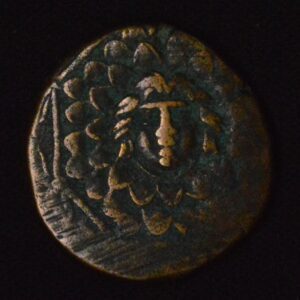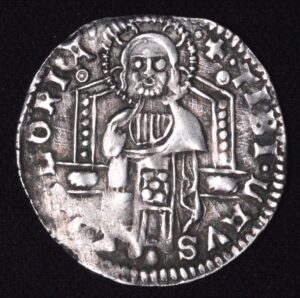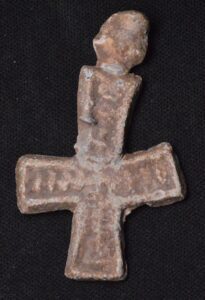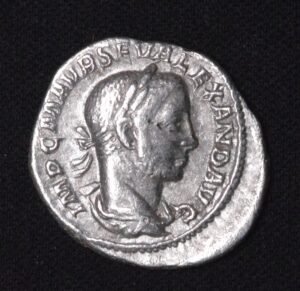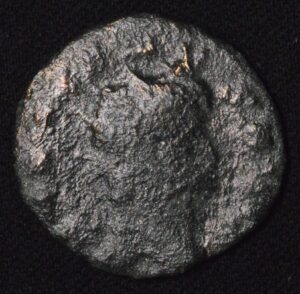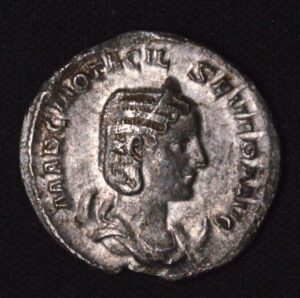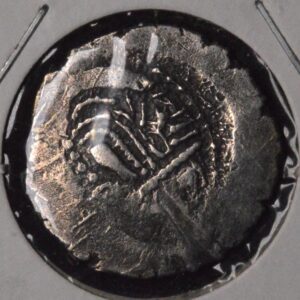Description
The Roman Valens AE (bronze) coin, dated between AD 364-378, is a fascinating artifact from the reign of Emperor Valens, who ruled the eastern half of the Roman Empire during a turbulent period. Valens is historically remembered for his administrative reforms and military campaigns, as well as his tragic death at the Battle of Adrianople in 378, which marked a significant turning point in Roman history. This bronze coin offers a tangible connection to his reign and the late Roman Empire’s complex challenges.
Typically, Valens coins feature a bust of the emperor on the obverse, often shown wearing a diadem and draped or armor-clad, capturing his role as a military and political leader. The reverse commonly depicts symbolic imagery such as Victory holding wreaths, palm branches, or the inscription “GLORIA ROMANORVM” (Glory of the Romans), celebrating military success and imperial strength.
This AE (bronze) denomination was a widely circulated coin in Valens’ time, used for everyday transactions, making surviving examples valuable and interesting for both historical and numismatic study. The coin’s bronze composition and often modest size offer insight into the economic and monetary practices of the late Roman world.
Collectors appreciate Valens bronze coins for their historical importance and their evocative connection to a pivotal time in Roman history. Coins from his reign showcase a blend of traditional Roman imperial iconography and subtle shifts reflecting the empire’s evolving political and cultural landscape.
Overall, a Roman Valens AE coin is a prized piece for anyone interested in late antiquity, Roman emperors, and ancient coinage. Its authenticity and well-preserved details make it a meaningful addition to collections focusing on Roman history and numismatics. This coin serves as both a historical document and a tangible relic from one of Rome’s last true military emperors.
The Roman Valens AE (bronze) coin, dated between AD 364-378, is a fascinating artifact from the reign of Emperor Valens, who ruled the eastern half of the Roman Empire during a turbulent period. Valens is historically remembered for his administrative reforms and military campaigns, as well as his tragic death at the Battle of Adrianople in 378, which marked a significant turning point in Roman history. This bronze coin offers a tangible connection to his reign and the late Roman Empire’s complex challenges.
Typically, Valens coins feature a bust of the emperor on the obverse, often shown wearing a diadem and draped or armor-clad, capturing his role as a military and political leader. The reverse commonly depicts symbolic imagery such as Victory holding wreaths, palm branches, or the inscription “GLORIA ROMANORVM” (Glory of the Romans), celebrating military success and imperial strength.
This AE (bronze) denomination was a widely circulated coin in Valens’ time, used for everyday transactions, making surviving examples valuable and interesting for both historical and numismatic study. The coin’s bronze composition and often modest size offer insight into the economic and monetary practices of the late Roman world.
Collectors appreciate Valens bronze coins for their historical importance and their evocative connection to a pivotal time in Roman history. Coins from his reign showcase a blend of traditional Roman imperial iconography and subtle shifts reflecting the empire’s evolving political and cultural landscape.
Overall, a Roman Valens AE coin is a prized piece for anyone interested in late antiquity, Roman emperors, and ancient coinage. Its authenticity and well-preserved details make it a meaningful addition to collections focusing on Roman history and numismatics. This coin serves as both a historical document and a tangible relic from one of Rome’s last true military emperors.
The Roman Valens AE (bronze) coin, dated between AD 364-378, is a fascinating artifact from the reign of Emperor Valens, who ruled the eastern half of the Roman Empire during a turbulent period. Valens is historically remembered for his administrative reforms and military campaigns, as well as his tragic death at the Battle of Adrianople in 378, which marked a significant turning point in Roman history. This bronze coin offers a tangible connection to his reign and the late Roman Empire’s complex challenges.
Typically, Valens coins feature a bust of the emperor on the obverse, often shown wearing a diadem and draped or armor-clad, capturing his role as a military and political leader. The reverse commonly depicts symbolic imagery such as Victory holding wreaths, palm branches, or the inscription “GLORIA ROMANORVM” (Glory of the Romans), celebrating military success and imperial strength.
This AE (bronze) denomination was a widely circulated coin in Valens’ time, used for everyday transactions, making surviving examples valuable and interesting for both historical and numismatic study. The coin’s bronze composition and often modest size offer insight into the economic and monetary practices of the late Roman world.
Collectors appreciate Valens bronze coins for their historical importance and their evocative connection to a pivotal time in Roman history. Coins from his reign showcase a blend of traditional Roman imperial iconography and subtle shifts reflecting the empire’s evolving political and cultural landscape.
Overall, a Roman Valens AE coin is a prized piece for anyone interested in late antiquity, Roman emperors, and ancient coinage. Its authenticity and well-preserved details make it a meaningful addition to collections focusing on Roman history and numismatics. This coin serves as both a historical document and a tangible relic from one of Rome’s last true military emperors.
CUSTOMER FEEDBACK








Related Products & Newly Released!
-
$30.00
-
$300.00
-
$110.00
-
$69.00




SHIPPING POLICY
Your order is shipped from the United States with USPS tracking within one business day.
14 Day Return Policy
You can return your item back within
14 days of the purchase

Secure payments
Your payments are 100% secure and are processed through Square or PayPal on a protected security network.
SHIPPING POLICY
FREE International and Domestic (United States) shipping. Your order is shipped with USPS tracking 24 hours after you order.
14 Day Return Policy
You can return your item back within
14 days of the purchase

Secure payments
Your payments are 100% secure and are processed through Square or PayPal on a protected security network.
RESOURCES
support
Get Fresh Articles!
Sign up now to receive our articles for the latest insights and promotions!
RESOURCES
support
Get Fresh Articles!
Signup our newsletter to get update insight or promotions.

